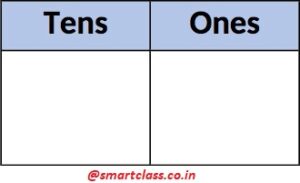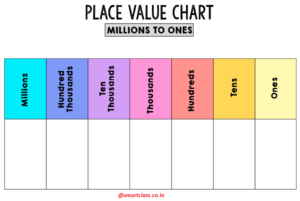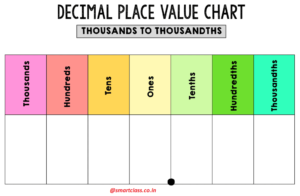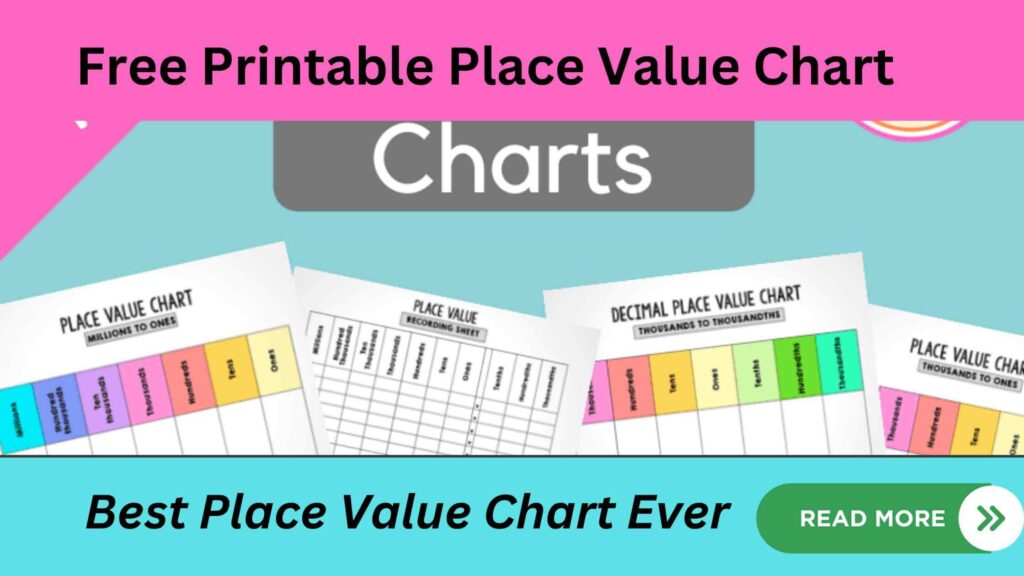In the realm of elementary school mathematics, the place value chart stands as an indispensable ally for educators. Its significance extends deep into the core of mathematical understanding for children. Having a user-friendly tool that facilitates comprehension of these crucial concepts is nothing short of priceless.
Best Place Value Chart Ever
The quest for a suitable place value chart that is both practical and reusable has been a perennial challenge. But fear not! Introducing our printable place value chart – the ultimate resource designed to be your steadfast companion as you embark on a new academic year. But first, what exactly is a place value chart?
What is a place value chart?
Useful math resources are designed with one goal in mind; to help students quickly and accurately compute multiplication/division calculations quickly and precisely by moving numbers on charts left/right depending on the amount multiplied/divided.

Dividing by 10 would simply involve shifting each three-digit number to one column right. Multiplying by 100 would require moving both columns left.
The chart’s size and complexity evolve with a child’s progression from kindergarten to 5th grade. In the early stages, it may feature nothing more than the tens and ones places. As students advance to 5th grade, the chart expands its scope to include the billions placed on the left and decimals to the thousandth place on the right.
Why use a place value chart?
Place value charts can be utilized across mathematics lessons from kindergarten to 5th grade. Lower elementary (1st and 2nd grades) typically use them only with numbers between tens and hundreds, but for upper elementary math they can easily be expanded upon so as to cover thousands, ten thousand, or hundred thousand as desired.

Create a decimals place value chart that emphasizes only numbers that fall under one, or create one that looks at negative numbers and how place value works with them.
Once students understand how to use place value charts effectively in class, they can be leveraged to enhance learning about all sorts of related subjects; such as ordering numbers.
Place value worksheets can also be combined with other place value resources, including place value mats or place value arrow cards for additional use.
Why the emphasis on using a place value chart?
The brilliance of the place value chart lies in its versatility across math lessons spanning kindergarten to 5th grade. Whether focusing on tens and hundreds in lower elementary or extending to thousands, ten thousand, and beyond for upper elementary math, the chart easily adapts.
Moreover, a decimals place value chart can zoom in on the one’s place and below, or explore the intricacies of negative numbers. Once students grasp the basics, these charts become invaluable tools for comprehending various place value-related topics, such as ordering numbers.
Put an end to place value misconceptions
A common misconception that often plagues discussions on the place value system is the notion that “to multiply a number by 10, you just need to add a 0 to the end of the number.” While this sometimes yields correct results, it becomes a stumbling block when decimal places enter the equation. Correcting this misconception is crucial for a solid understanding of place value.
Enter the Best Place Value Chart
As a teacher, you already appreciate the significance of the place value chart. But did you know there’s a way to elevate its effectiveness? With just colored cards, pens, and a pair of scissors, you can transform a basic chart into a powerful teaching tool.

Enter the Place Value Concertina – a resource that can be crafted in under ten minutes with the help of your students. It’s so simple that you can even involve them in its creation!
Crafting Your Place Value Concertina
Gather these materials:
- 2 A4 sheets of colored card stock (preferably two different colors)
- Scissors
- A felt-tip pen
- A pencil
- A ruler
Follow these straightforward instructions to create your place value concertina.
Watch a Video on Place Value Charts
How to Utilize Your Place Value Concertina
Once crafted, the place value concertina becomes a hands-on tool for teaching place value. Whether multiplying or dividing by 10, students can physically move the digits, reinforcing the concept accurately. The concertina is not only a visual aid but also a tactile experience that solidifies understanding.
Activity Ideas for Place Value Charts
Transform your place value concertina into a dynamic resource for engaging activities. From number games to collaborative problem-solving, the possibilities are vast. Your students can even create their own numbers within the concertina and challenge each other with mathematical puzzles.
In conclusion, embrace the power of the place value chart in your teaching journey. This resource, passed down through generations of teachers, has proven its efficacy time and again. So, here’s to you, Mr. Bell – we owe you one!
Some Place value charts
Millions to Ones

Decimal Place Value Chart

Place Value Recording Sheet

Also Read:
- What is Expanded form in Math
- Unseen Passage for Class 3 English with Question Answers
- Noun Worksheet for Class 2: Types and Roles in Sentence Construction
- Cordova Smart Class Software: Transformative Learning Solutions
